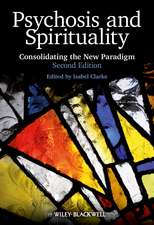After Digital: Computation as Done by Brains and Machines
Autor James A. Andersonen Limba Engleză Hardback – 20 apr 2017
James A. Anderson, a pioneer of biologically inspired neural nets, presents two different kinds of computation-digital and analog--and gives examples of their history, function, and limitations. A third, the brain, falls somewhere in between these two forms, and is suggested as a computer architecture that is more capable of performing some specific important cognitive tasks-perception, reasoning, and intuition, for example- than a digital computer, even though the digital computer is constructed from far faster and more reliable basic elements. Anderson discusses the essentials of brain hardware, in particular, the cerebral cortex, and how cortical structure can influence the form taken by the computational operations underlying cognition. Topics include association, understanding complex systems through analogy, formation of abstractions, the biology of number and its use in arithmetic and mathematics, and computing across scales of organization. These applications, of great human interest, also form the goals of genuine artificial intelligence. After Digital will appeal to a broad cognitive science community, including computer scientists, philosophers, psychologists, and neuroscientists, as well as the curious science layreader, and will help to understand and shape future developments in computation.
Preț: 326.61 lei
Preț vechi: 390.62 lei
-16% Nou
62.50€ • 65.42$ • 52.02£
Carte tipărită la comandă
Livrare economică 19-25 martie
Specificații
ISBN-10: 0199357781
Pagini: 400
Ilustrații: 104
Dimensiuni: 257 x 183 x 28 mm
Greutate: 0.91 kg
Editura: Oxford University Press
Colecția OUP USA
Locul publicării:New York, United States
Descriere
Current computer technology doubles in in power roughly every two years, an increase called <"Moore's Law.>" This constant increase is predicted to come to an end soon. Digital technology will change. Although digital computers dominate today's world, there are alternative ways to <"compute,>" which might be better and more efficient than digital computation. After Digital looks at where the field of computation began and where it might be headed, andoffers predictions about a collaborative future relationship between human cognition and mechanical computation.James A. Anderson, a pioneer of biologically inspired neural nets, presents two different kinds of computation-digital and analog—and gives examples of their history, function, and limitations. A third, the brain, falls somewhere in between these two forms, and is suggested as a computer architecture that is more capable of performing some specific important cognitive tasks-perception, reasoning, and intuition, for example- than a digital computer, even though the digital computer isconstructed from far faster and more reliable basic elements. Anderson discusses the essentials of brain hardware, in particular, the cerebral cortex, and how cortical structure can influence the form taken by the computational operations underlying cognition. Topics include association, understanding complexsystems through analogy, formation of abstractions, the biology of number and its use in arithmetic and mathematics, and computing across scales of organization. These applications, of great human interest, also form the goals of genuine artificial intelligence. After Digital will appeal to a broad cognitive science community, including computer scientists, philosophers, psychologists, and neuroscientists, as well as the curious science layreader, and will help to understand and shape futuredevelopments in computation.
Recenzii
“If you want to understand the arrival of the computer age in the 20th century, you will value this book. To chart the course we are on, Anderson combines a physicist's knowledge of the technology with a psychologist's appreciation of human aspirations and cognitive capabilities. Informative, thoughtful, accessible.”-Pentti Kanerva, PhD, Redwood Center for Theoretical Neuroscience
Notă biografică
James A. Anderson has been a member of the faculty of Brown University since 1973 and is now Professor in the Department of Cognitive, Linguistic and Psychological Sciences. He received an SB in physics and PhD in physiology both from MIT. He has published extensively in the area of computational models for cognition and memory and computational neuroscience.












